Click here to read 3 Simple Science Experiments that are Perfect for the Backyard on Hands On As We Grow®
Here are 3 backyard science experiments that all use the hot summer sun you are going to want to try with your preschoolers! They are so simple and so fun!
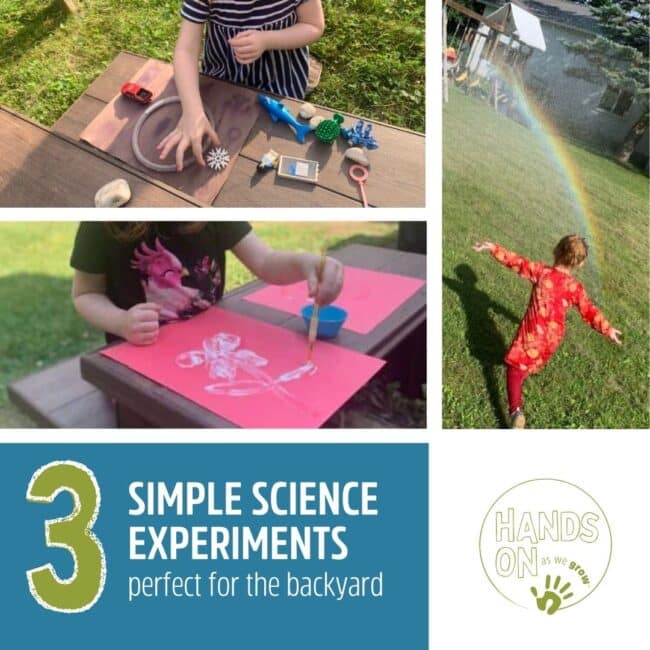
We are going to make our very own rainbows, paint with sunscreen and watch as the sun can’t reach the paper through it, and make shadow prints!
My kids love science, and the love being in the backyard.
But sometimes I find they want to have something a little different to do back there halfway through the summer.
My favorite thing to add to the mix is a little learning activity that keeps their minds active through summer break.
What better way to do this than with a little summer science experiment fun right in the big outdoors of our own backyard.
Make Garden Hose Rainbows with the Sun
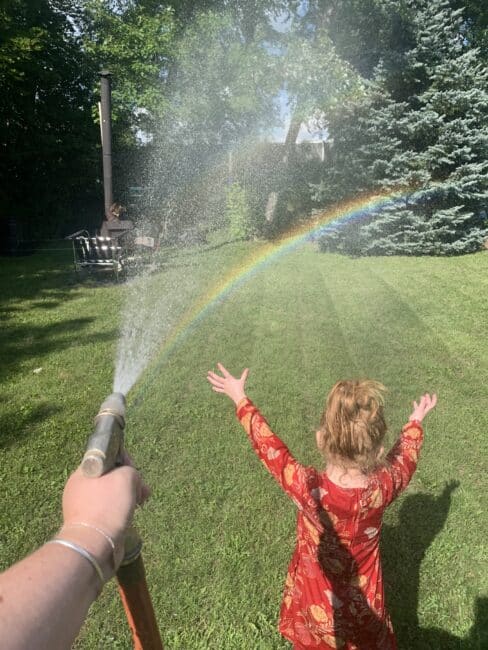
My kids absolutely love rainbows.
Coloring them in, naming the colors, sorting things into rainbow order.
The one thing that I always find disappointing is how rare it is to see a real rainbow.
And when we do, I find it’s not always easy to have my kids actually locate it in the sky.
It’s like they don’t really know what they are looking for because they are so much smaller than the cartoon ones they are used to.
This backyard science experiment is all about seeing real rainbows.
And making your own rainbows with your hose and the sun!
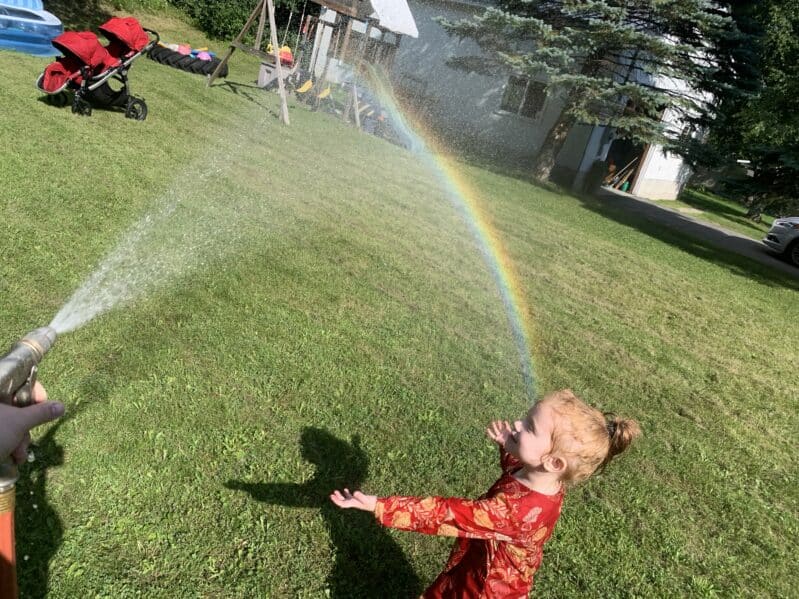
For this Backyard Science Experiment, All You Need is:
- A super sunny day
- A garden hose (spray nozzle recommended)
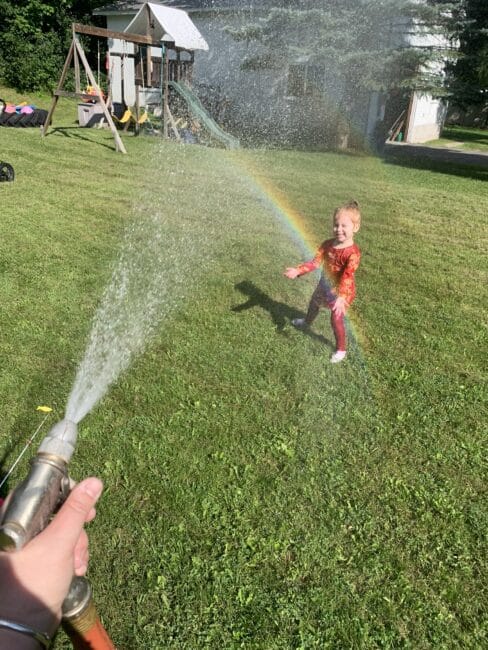
Execute Garden Hose Rainbows Experiment
There are 2 key elements to creating rainbows with a garden hose.
First you want to make sure the sun is at your back and not behind clouds.
The sun needs to be shining bright and directly on the water spray for this experiment to work well.
The second key thing for this backyard science experiment is that it needs to be a water spray and not a thick stream.
Just shoot the water upwards so it kind of rains down allowing it to catch the light.
If you don’t have a spray nozzle on your hose, you can use your thumb to press against the opening and restrict the water to create a spray.
Note: If you use your thumb then be prepared to get wet. It is hard to control.
I made sure to have Maisie standing beside me for the first few times so I could be sure she would see the rainbows.
Note that your kids probably can’t see the rainbow from the opposite side of the water spray.
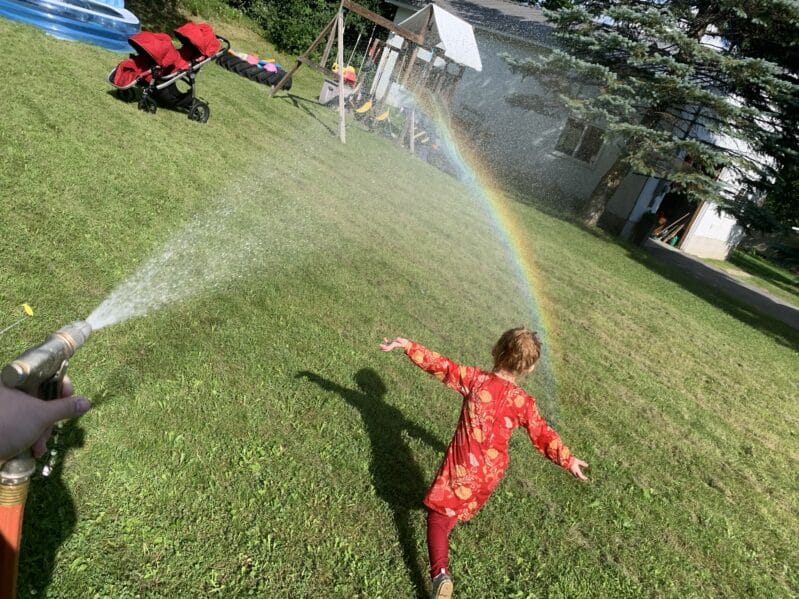
So for this science experiment you will need to be sure that your kids come to your side of the backyard before running through it so they will actually see the rainbow.
Maisie loved running around in the rainbows.
After a while I gave my preschooler the hose and let her create the rainbows for Mommy to run through!
This got the laughs for sure.
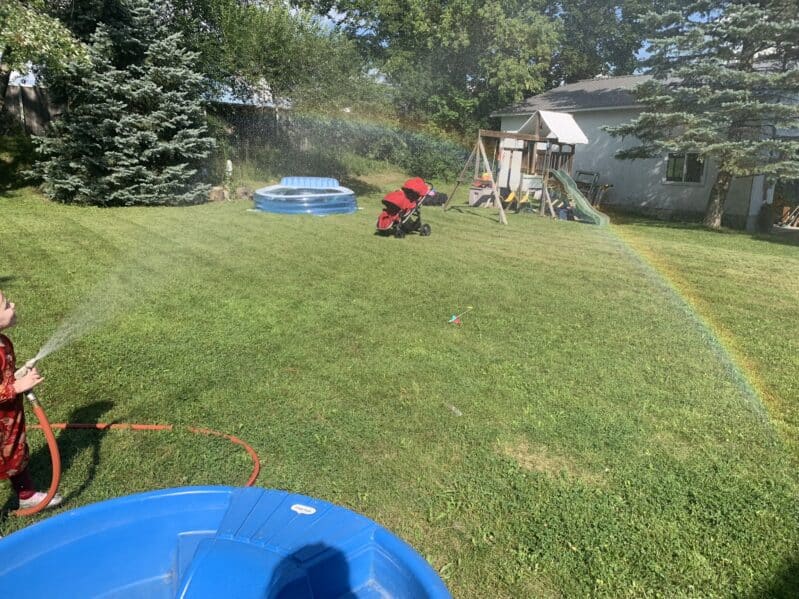
We also discovered that at some angles we got bigger rainbows!
And we even were able to create a faint double rainbow at one point when the sun was hottest.

The Science Behind This Experiment
While you have fun making and running through rainbows in your own backyard, why not teach a little science with this experiment?
You can take the time to talk about how the light from the sun is shining through the water and making colorful arcs called rainbows.
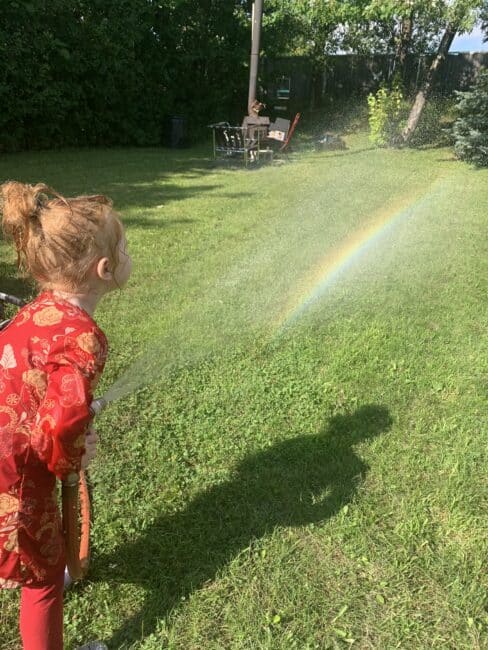
For older kids you can share about how when the sunlight shine on the water it reflects off the water droplets like a mirror. Then it bends, called refraction, and splits into 7 different colors!
Sun Bleached Shadow Puzzle
This experiment is super fun, quick and simple too.
It’s also one that you can keep to play with again later.
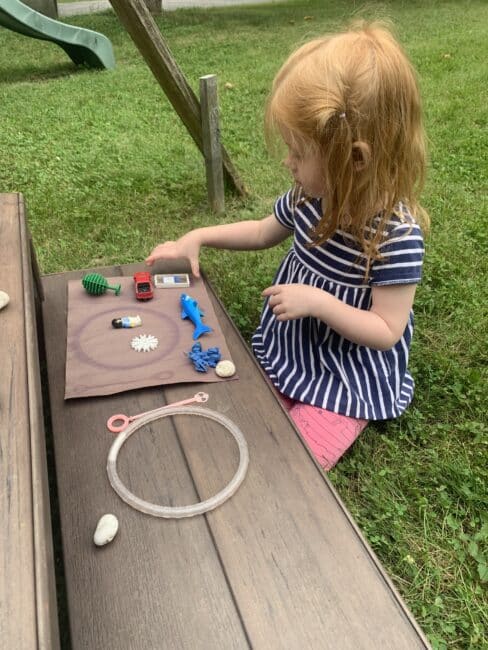
For this Backyard Science Experiment, All You Need is:
- A super sunny day
- Dark construction paper (black is perfect)
- Small toys and objects
- Flat surface in the sun (a tray works also)
Execute Shadow Puzzle Experiment
First thing we did was place the dark construction paper down on a flat surface.
I held the paper from blowing away while I sent my preschooler on a hunt to find small toys from around the yard.
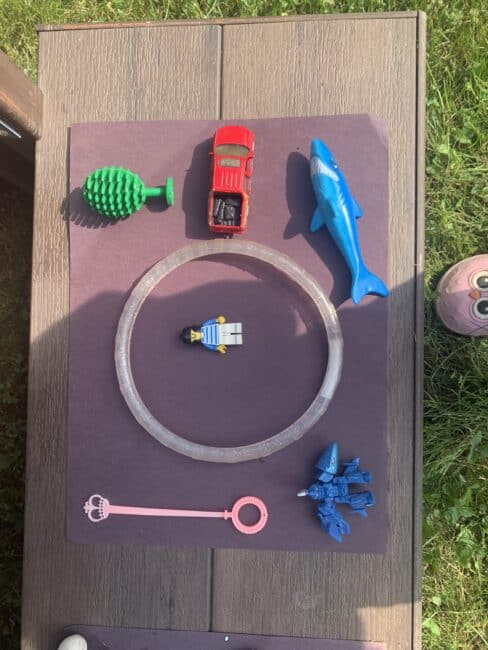
We continued searching for different items with some prompting.
Can you find a LEGO blocks man from inside the treehouse?
Are there any fish in the water table?
What about a diving ring from the pool?
Once we had a good variety of items we left them to soak in the sun.
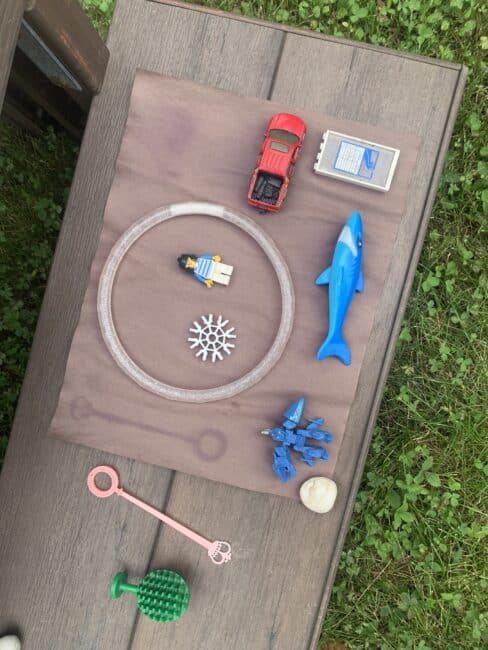
We came back out the next day to find out what had happened.
Maisie was amazed with this backyard science experiment.
She had no idea what was going to happen.
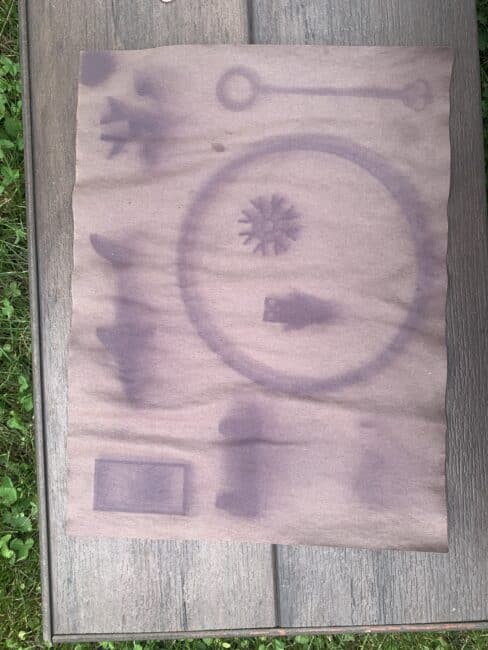
We promptly removed all the objects to reveal a shadow puzzle.
This was a great opportunity to talk about why wearing a hat in the sun is a good idea.
And why Mommy likes us to take breaks and sit under the shade of a tree for snack time at the park or beach.
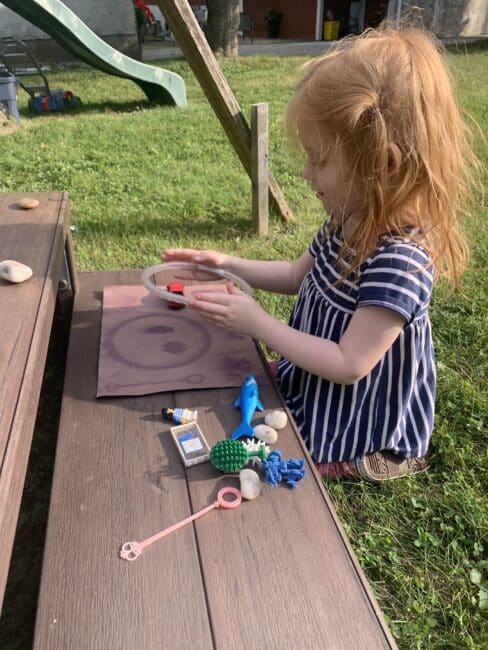
Maisie went right to work trying to match her toys and objects to the shadows on the paper.
She also enjoyed teasing me and pretending she believed it went in the wrong places.
Oh how I love the sense of humor in preschoolers!
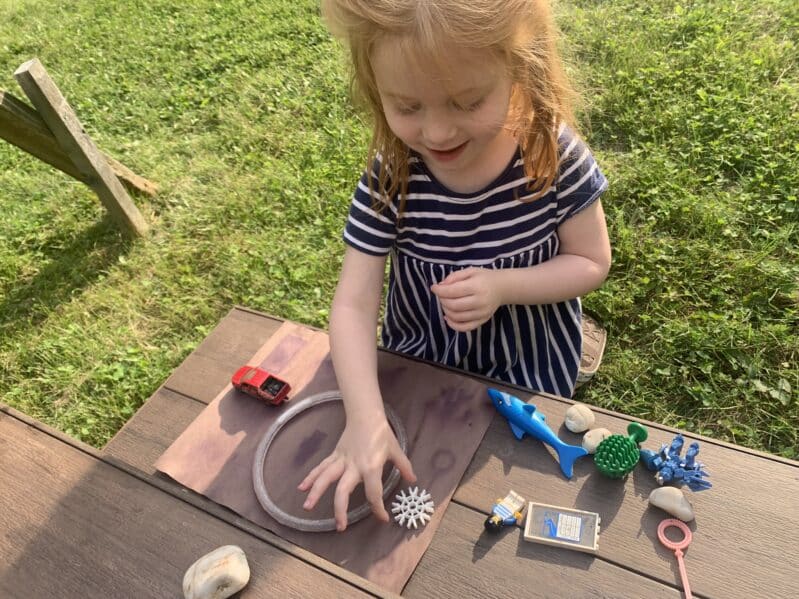
She was so proud of herself as she matched all the items to their shadows.
Maisie even took the time to try and match the correct stones to each corner.
Though, I am not sure if there was any way to be sure which one went where.
Note: If you want to keep this backyard science experiment to play with again later then be sure to use objects that don’t need to quickly be returned to their original place.
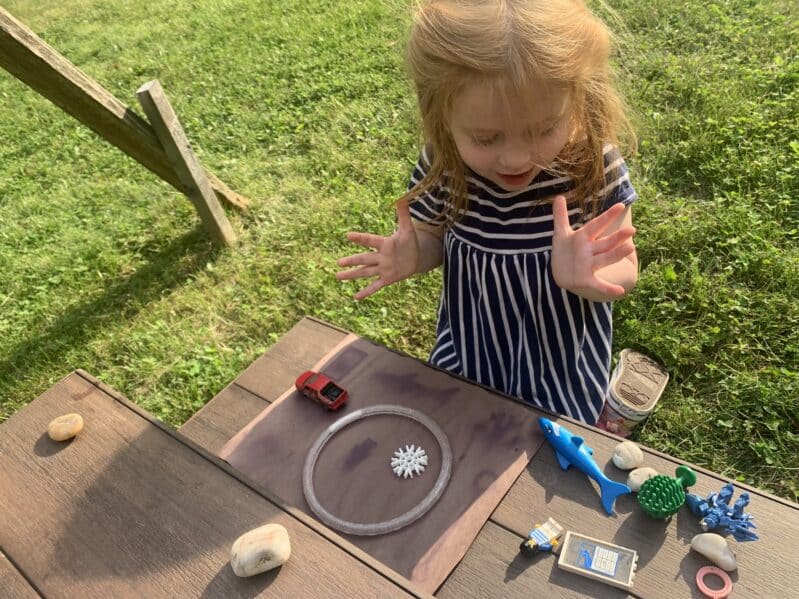
We repeated this over and over.
Maisie asked me if we could get a new paper and do it again with new toys.
I love when an activity is so successful that my kids ask to repeat it the next day.
The Science Behind This Experiment
Here are some science facts in case you want to talk about the experiment while playing in the backyard.
So why does the sun bleach put colors from construction paper?
The suns light waves are how some of its energy travels to earth.
Some of these light waves contain something called ultraviolet rays that are strong enough to break down the bonds of chemicals in the dye of the paper.
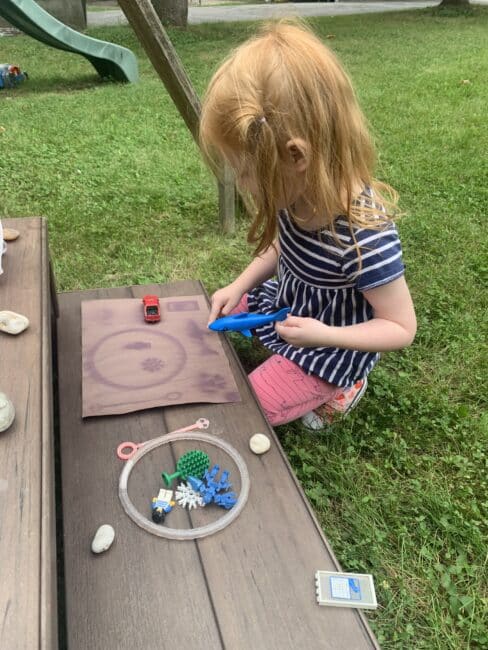
This is how the color fades away in the areas that are not covered by a solid object.
The darker the paper, the more dye chemicals are present.
And that means there is a more drastic effect than if we used a light colored paper.
Painting with Sunscreen Backyard Science Experiment
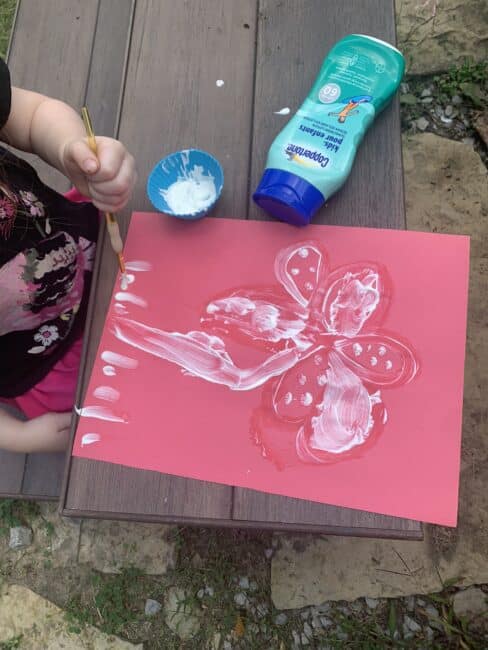
Have you ever tried to explain to a preschooler why sunscreen is so important and have them still balk at the idea?
I have. And then I thought that I could find a way to explain to them why we can’t just do arms and legs and ignore the face.
It came to mind that painting with sunscreen would be a great science experiment for the backyard.
A perfect example of how sunscreen protects us by blocking the sun completely!
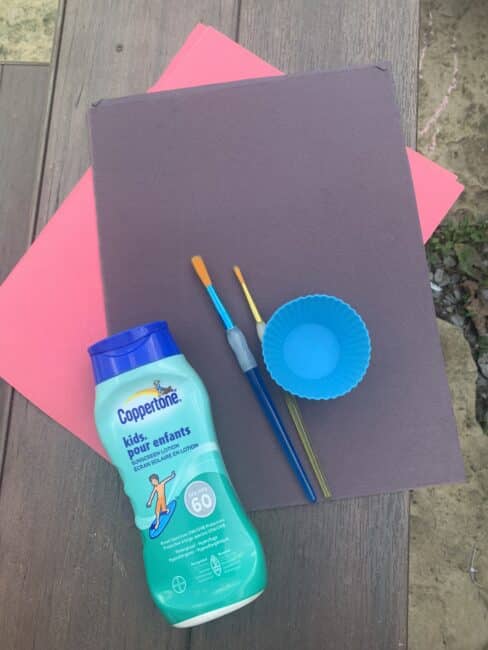
For this Backyard Science Experiment, All You Need is:
- Sunscreen (lotion, not spray on)
- Dark colored construction paper
- Paintbrush (or fingers)
- Small dish
- Small stones
Execute Sunscreen Painting Experiment
This is quite simple to execute.
Squirt some sunscreen in a dish and paint a picture.
The more you use the better. Which goes over very well with my preschooler!
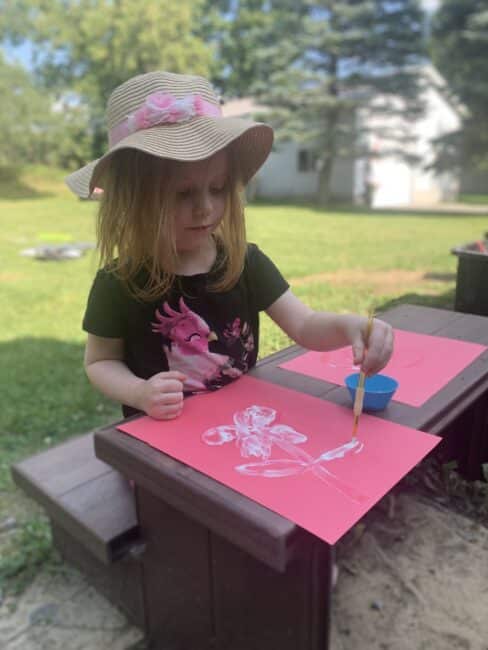
At first Maisie wasn’t sure what to do. And squiggles and lines would have done just fine.
But I offered to draw a flower for her to color in and she loved the idea.
After coloring in the flower I prompted her to ask if she wanted to add a sun, or grass, or a bird in the sky.
I find little prompts like that can really help to get her wheels turning and the creativity flowing.
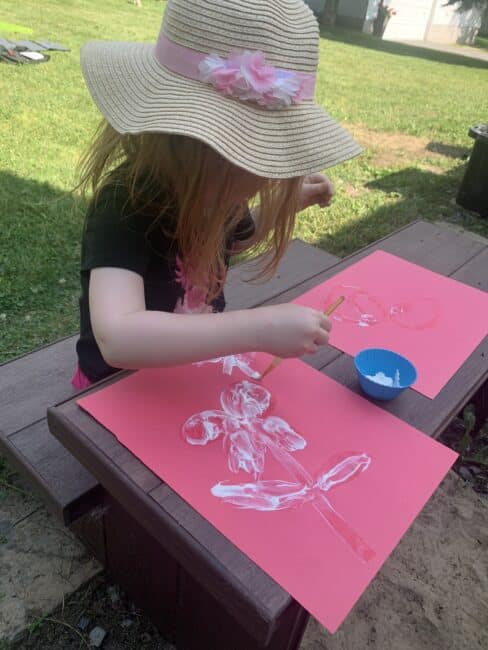
Maisie chose to add a sun and then declared that one was complete.
The creativity is all in their hands for this one.
As long as only part of the paper is painted and part is left dry then this backyard science experiment will work.
On the next one she asked me to draw another flower and she decided to make a pattern.

We alternated between polka dots and fully colored petals on this flower.
And then we added a pattern in the grass to with long grass, short grass.
I joined in on this one at her request and did the long blades while she took her turns painting the short ones.
I try to add patterns into anything I can to help her see how easy they can be and get used to them more before she starts at school.
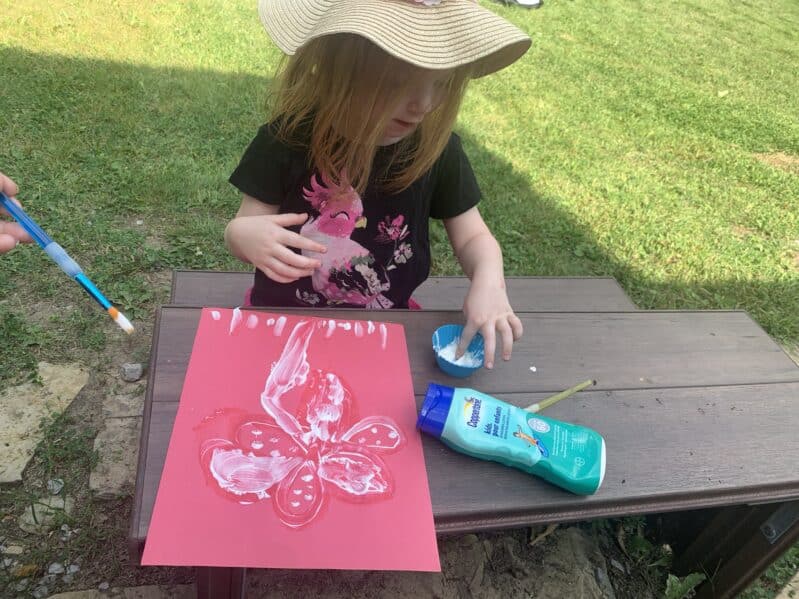
We had some fun with finger painting too which added an element of sensory for her.
She loved that for sure.
We talked about using sunscreen and my preschooler decided to wipe off her fingers after by applying the sunscreen to her face.
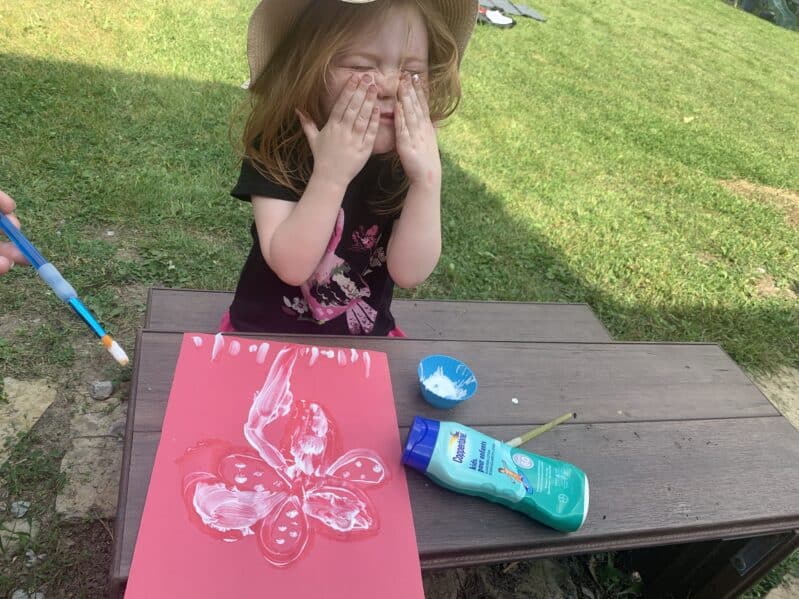
This was a miracle since she always protests the facial application of sun lotion.
Win win for sure!
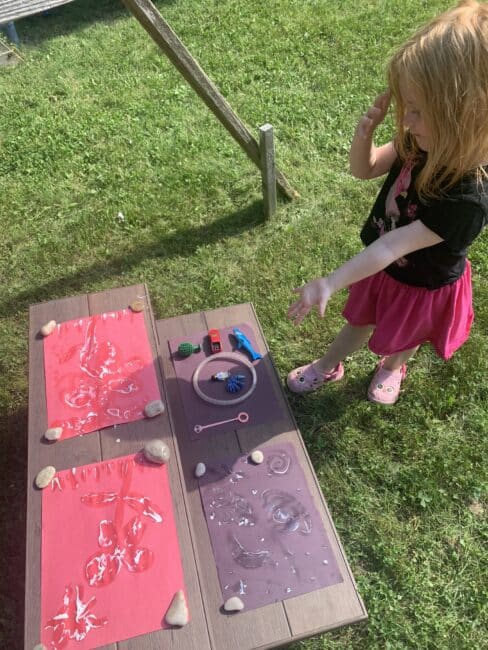
Now that the creative part was complete, it was time to let the science of this experiment take place in the backyard.
We brought the paintings over to a flat surface in the direct sunlight.
Added some stones to the corners to hold them from blowing away.
And then we went off to play.
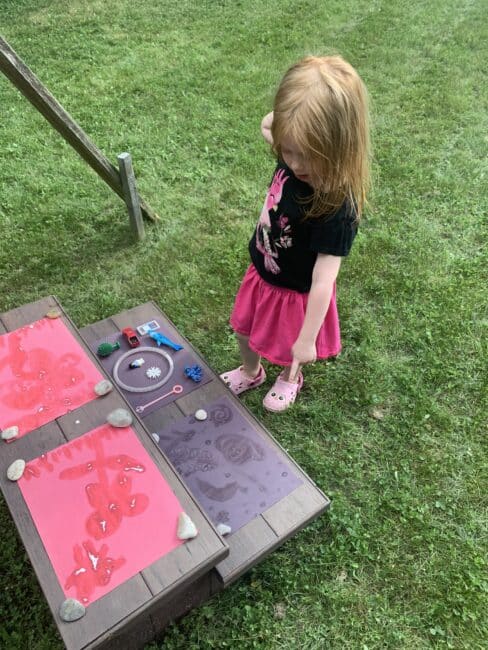
When we returned about 4 hours later, we found that the sun had bleached the pages quite a lot.
But every spot with sunscreen was protected and held its color.
The Science Behind This Experiment
As with the backyard shadow puzzle science experiment above, you can note that the ultraviolet rays break the chemical bonds of the construction paper to bleach it.
On the other hand, why does sunscreen stop that from happening when it isn’t a solid object blocking the energy of the sun?
Sunscreen works in 2 ways (depending on what kind you buy and what ingredients are in it.)

Sunscreen sits on top of the skin. It doesn’t soak in.
And it blocks the UV rays from penetrating the skin and burning it.
Some sunscreen acts as a shield that reflects the rays and solar heat from touching the skin.
Other ingredients in sunscreen act like a sponge and soak up the suns energy before it can reach the body.
What are some of your favorite science experiments to do outdoors?
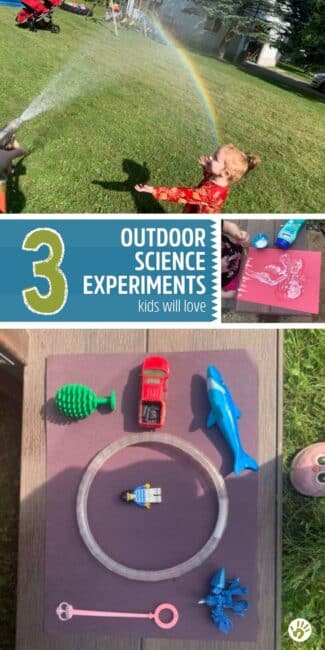
0 Commentaires